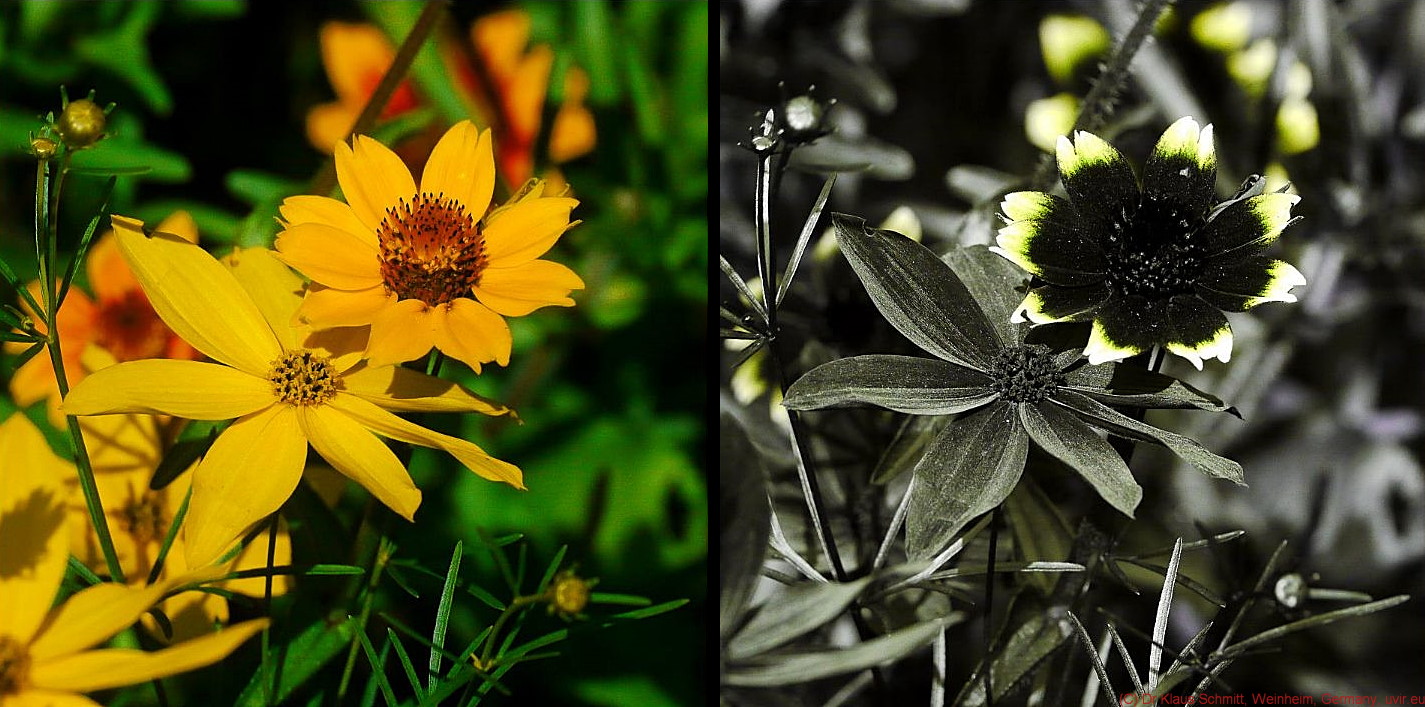Dr Klaus Schmitt
Well-known member
I was shooting Zinnias today, when I saw one flowering aside another bright yellow flower.
I noticed the Zinnias being frequently visited by bees and bumblebees, whereas the similar
looking yellow one had only few guests.
Well, the reflected UV image shows clearly why IMHO...

Even covered by other plants it makes itself clearly seen (see blurry BG Zinnia).
So not really "competition" for that UV-bright Zinnia (340-360nm).
I noticed the Zinnias being frequently visited by bees and bumblebees, whereas the similar
looking yellow one had only few guests.
Well, the reflected UV image shows clearly why IMHO...

Even covered by other plants it makes itself clearly seen (see blurry BG Zinnia).
So not really "competition" for that UV-bright Zinnia (340-360nm).
